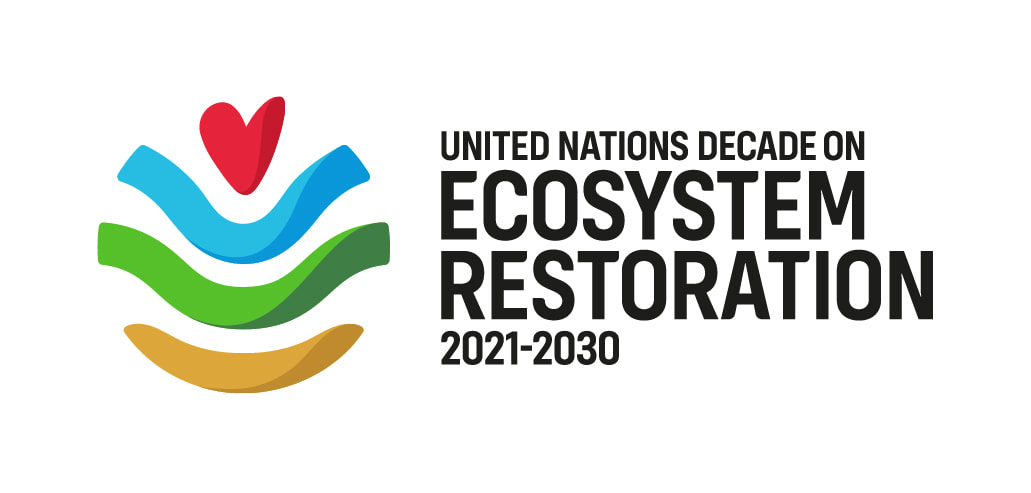CLIMATE RECOVERY WITH
PLANTS & WATER
- Hydrology, Carbon and Contours - The Future of Farming, by Adam Willson, Gwyn Jones, Greg Paynter, Garry Edser, DuaneNorris, Michal Kravcik, SCIREA Journal of Agriculture, Volume 8, Issue 2, April 2023
- Trees Help Battle Global Warming and So Much More, Emeritus Professor Tim Roberts, School of Environmental and Life Sciences, The University of Newcastle, Newcastle Herald, 29 July 2018
- Rivers in the Sky: How Deforestation Is Affecting Global Water Cycles, by Fred Pearce, 24 July 2018: "A growing body of evidence indicates that the continuing destruction of tropical forests is disrupting the movement of water in the atmosphere, causing major shifts in precipitation that could lead to drought in key agricultural areas in China, India, and the U.S. Midwest."
- Indirect and Direct Thermodynamic Effects of Wetland Ecosystems on Climate, Natural and Constructed Wetlands, Chapter 7, Jan Pokorny, Petra Hesslerova, Hanna Huryna, and David Harper, Springer International Publishing. J. Vymazal (ed.), Switzerland 2016
- The Role of Water and Vegetation in the Distribution of Solar Energy and Local Climate: a Review, Hanna Huryna & Jan Pokorny, Received: 14 May 2015, Accepted: 5 October 2016, Institute of Botany, Czech Academy of Sciences, 2016
- Daily Dynamics of Radiation Surface Temperature of Different Land Cover Types in a Temperate Cultural Landscape: Consequences for the Local Climate, Petra Hesslerová, Jan Pokorný, Jakub Bromb, Alžběta Rejšková-Procházková, available online, 28 February 2013
- Evapotranspiration - a Driving Force in Landscape Sustainability, Martina Eiseltová, Jan Pokorný, Petra Hesslerová, Wilhelm Ripl, 2012
- Solar Energy Dissipation and Temperature Control by Water and Plants, Pokorný, J., Brom, J., Cermák, J., Hesslerová, P., Huryna, H., Nadezhdina, N. and Rejšková, A. (2010) ‘Solar energy dissipation and temperature control by water and plants’, Int. J. Water, Vol. 5, No. 4, pp. 311–336, 2010
- International Journal of Water - Special Issue on Water and the Complexities of Climate, (2010) Volume 5, No 4, Guest Editor: Associate Professor Ariel Salleh, 2010
- Losing Fertile Matter to the Sea: How Landscape Entropy Affects Climate, Wilhelm Ripl, Department of Landscape Ecology, Limnology, Technical University of Berlin, (2010) Int. J. Water, Vol. 5, No. 4, p 353, 2010
- The Biotic Pump: Condensation, atmospheric dynamics and climate, Anastassia M. Makarieva and Victor G. Gorshkov, Theoretical Physics Division, Petersburg Nuclear Physics Institute, (2010) Int. J. Water, Vol. 5, No. 4, p 365-385, 2010
- Re-Coupling the Carbon and Water Cycles by Natural Sequence Farming, Duane Norris and Peter Andrews, Inderscience Enterprises Ltd, 2010
- Temperature and Humidity Characteristics of Two Willow Stands, a Peaty Meadow and a Drained Pasture and their Impact on Landscape Functioning, Jakub Brom and Jan Pokorný, Boreal Env. Res. 14: 389–403, 2009
- Water: the Bloodstream of the Biosphere, Wilhelm Ripl, Department of Limnology, Technische Universitaet Berlin, Hellriegelstrasse 6, 14195 Berlin, Germany, The Royal Society, Published online 13 November 2003, "Areas with an even cover of vegetation, with sufficient evaporable water, have more predictable weather events than do damaged areas without proper vegetation cover."
- Dissipation of Solar Energy in Landscape - Controlled by Management of Water and Vegetation, Jan Pokorný, Academy of Sciences of the Czech Republic, Institute of Botany, Section of Plant Ecology, ENKI p.b.c. CZ-379 82 Trebon, 135 Dukelska, Czech Republic, 2001
- How Humans Affect Local Climate by Landscape Management - the Distribution of Solar Energy in Different Types of Land, Jan Pokorny, Urška Ratajc, Petra Hesslerová
- How Trees Cool Down Towns in Summer, Jan Pokorny, Urška Ratajc
A NEW WATER PARADIGM:
FROM DRAINAGE TO
'IN-PLANT' & 'IN-GROUND
STORAGE
|
|
|
- Global Action Plan, Michal Kravčík and Jan Lambert Slovakia and U.S.A., 2015 - “A global plan of climate restoration of the small water cycle of regional landscapes, with a goal of decreasing floods, drought, natural disasters, and other undesirable climate changes, and increasing the biodiversity and production potential of all continents, through the introduction of various measures of rainwater retention suitable for all areas of human habitation and usage.”, 2015
- Water for the Recovery of the Climate - A New Water Paradigm, M. Kravcík, J. Pokorný, J. Kohutiar, M. Kovác, E. Tóth, 2007
A NEW PLANT PARADIGM:
FROM NATIVISM TO
PLANT FUNCTION
|
|
|
- Hydrology, Carbon and Contours - The Future of Farming, by Adam Willson, Gwyn Jones, Greg Paynter, Garry Edser, DuaneNorris, Michal Kravcik, SCIREA Journal of Agriculture, Volume 8, Issue 2, April 2023
- Not all weeds are villains. After a fire, some plants - even weeds - can be better than none, by Dr Samantha Capon and Dr Gary Palmer, The Conversation, 5 February 2020
- Poplars and Willows - Trees for Society and the Environment, edited by JG Isebrands and J Richardson, The Food and Agriculture Organization of the United Nations and CABI, (collaboration of approximately 60 scientists from around the world - all articles peer-reviewed and reviewed by the editors), 2014
- Weeds or Wild Nature: A Permaculture Perspective, by David Holmgren, Plant Protection Quarterly, Volume 26, Issue 3, 2011
- The Crucial Role of Willows in Sustainable River Management, Haikai Tane, The Watershed Foundation, March 2010
- Temperature and Humidity Characteristics of Two Willow Stands, a Peaty Meadow and a Drained Pasture and their Impact on Landscape Functioning, Jakub Brom and Jan Pokorný, Boreal Env. Res. 14: 389–403, 2009
- Invasion Biology by Mark A Davis, OUP Oxford, 2009. Mark A Davis challenges the idea of "invasive species": “The field of Invasion Biology is in a period of rapid transition. (Loc 3788)… It is important that the public and incoming students to the field receive a balanced characterisation of invasions. By this I mean that positive as well as negative impacts of introduced species should be reported as well as the variety of factors that have been discovered to facilitate or inhibit invasions. (Loc 3795)… My advice to young ecologists is to be open to new ideas and not to follow accepted dogma with blind allegiance... More than 50 years ago, using almost identical terms, Egler (1951) warned colleagues of placidly accepting traditional dogmas. It is important to learn about current and dominant paradigms, but avoid marinating yourself in them. (Loc 3811) Scepticism is probably the most important attribute of a scientist.” (Loc 3818), 2009
- Willows: Weeds of Retention, Dr Michael Wilson Research conducted whilst at the Centre for Environmental Management, University of Ballarat, Murray-Darling Basin Authority, 2006, Bungendore, Draft paper accepted for publication in the Proceedings of the Natural Sequence Farming workshop – Defining the Science and the Practice, 31 Oct – 1 Nov 2006, Bungendore, NSW, 2006
- Organic Matter Dynamics in Willow and Eucalypt Lined Central Victorian Streams, Michael E Wilson BSc, MSc (Maquarie), Thesis, 2001
- Weeds - Guardians of the Soil, Joseph A Cocannouer, Devin-Adair Co, Fourth Printing edition, 1950
LANDSCAPE RESTORATION &
MANAGEMENT
APPROACHES & EXAMPLES
- Hydrology, Carbon and Contours - The Future of Farming, by Adam Willson, Gwyn Jones, Greg Paynter, Garry Edser, DuaneNorris, Michal Kravcik, SCIREA Journal of Agriculture, Volume 8, Issue 2, April 2023
- Catchment Function Analysis Using Google Earth Mapping, Tim Wiley, Australasian Agribusiness Perspectives 2017, Volume 20, Paper 1, 2017
- ‘Yanget Farm’ Rehydration Project by Rod O’Bree and Peter Andrews - Catchment Function Analysis by Tim Wiley, Tierra Australia, August 2017
- The Principles of Natural Sequence Farming, John Williams, Natural Resources Commission, Sydney, (2010) Int. J. Water, Vol. 5, No. 4, p 396, 2010
- Natural Sequence Farming: Defining the Science and the Practice, Hazell, Peter and Norris, Duane, Proceedings of the 1st Natural Sequence Farming Workshop. ‘Natural Sequence Farming: Defining the Science and the Practice’, held in Bungendore, NSW, Australia, on 31 October and 1 November 2006, published in 2007
- The Swampy Meadow: From an Enigmatic Perception to a Better Understanding, Barbara Mactaggart, David Goldney, Johannes Bauer, Andrew Rawson, copyright: Peter Hazell and Duane Norris, Proceedings of the first Natural Sequence Farming Workshop, Natural Sequence Farming- Defining the Science and the Practice, held at Bungendore, NSW, Australia on the 31 October and 1 November 2006
- Restoring Watershed Systems by Converting to Natural Sequence Farming, Haikai Tane, published by Duane Norris & Peter Hazell, 2006
- The ‘Natural Farming Sequence’, Tarwyn Park, Upper Bylong Valley, New South Wales’. An Expert Panel report prepared for the Honourable John Anderson, MP, Deputy Prime Minister of Australia, by CSIRO Land and Water, CSIRO, 2002
SCIENTISTS
TALS Institute has set up the Independent Scientists Panel as part of the Landscape Resilience Council.
Many other pre-eminent scientists are supporting Peter Andrews' 40 years of observations and findings about the Australian landscape and its functions which are clearly presented in physical evidence and numerous case studies.
Notable supporters of Peter Andrews' observations of The Australian Landscape Science include:
Many other pre-eminent scientists are supporting Peter Andrews' 40 years of observations and findings about the Australian landscape and its functions which are clearly presented in physical evidence and numerous case studies.
Notable supporters of Peter Andrews' observations of The Australian Landscape Science include:
- Dr John Williams, also former NSW Natural Resources Commissioner, as well as former Head of CSIRO, Land and Water
- Dr Jan Pokorný CSC, Restore Climate
- Michal Kravčík, Hydrologist, Ľudia a Voda
- Prof David Goldney, Landscape Ecologist
- Prof David Mitchell, Fresh Water Ecologist
- Dr Wilhelm Ripl, Land Ecologist, Tech Uni, Berlin
- Prof Haikai Tane, Fmr Chief Planner for Murray Darling, Director, Watershed Systems




